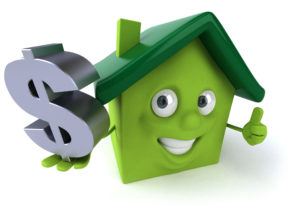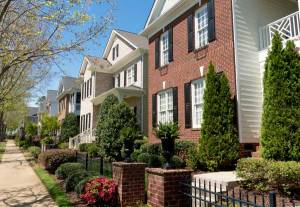
As we search for your next perfect home, you will likely want to know the value of your current home. I especially enjoy providing valuations as part of my services. You have invested your care and your personality into your home and I am always pleased to explore this with you. And while your home is unique, there are some common elements that determine what will and won’t enhance the valuation of your home. To give some interesting insight into this topic, CREB® published a story in CREB®Now on March 17th, 2017 wherein they interviewed a local residential real estate appraiser to get her take on some elements that affect a home’s ultimate value (original CREB® story).
I have reprinted the text of the article here for your enjoyment.
An Appraiser’s Perspective of Value
Exploring Home Valuation
Whether you are buying, selling, financing or re-financing, there is a good chance that your home will be subject to an appraisal to assess its value. As this is an important aspect of almost all residential real estate transactions, CREB® spoke with Kira Penner, CRA, to discuss the appraisal process and clarify some key points when contemplating the value of your home. Kira is a certified Canadian Residential Appraiser and has been with Avison Young Valuation and Advisory Services (formerly Linnell Taylor Lipman and Associates) since 2005.
How is my home valued?
Kira indicates that residential dwellings are generally appraised using the Direct Comparison Approach to value. This means that your home is compared with similar homes in your community and surrounding neighborhoods using current sales data. The appraised value reflects the age, condition and size of your home in relation to those properties that have recently sold in your area. If there has been a fair amount of sales activity, appraisers try to use data that is usually no older than 90 days. Similarly, your home’s value is in part based on being able to successfully market and obtain a sale in approximately a 90-day period.
What factors influence my home’s valuation?
The size of your lot and where it is situated in your neighborhood can bear on your valuation. If your home faces or backs onto a park, if it fronts a busy collector street or thoroughfare, if it is located across from a school or offers easy access to the LRT and other amenities are considerations that will factor in the final appraisal. Kira suggests that in Calgary, access to the LRT is considered to be very desirable while being located across from a school may have a negative influence on your home’s appraisal analysis.
A major consideration in determining your home’s appraised value is the degree to which it conforms to the other properties in your neighborhood. Kira emphasises that a home that is built or renovated to a spec far beyond the comparable homes in the area will not necessarily see a corresponding dollar-for- dollar increase in value.
Here are some other factors that may influence your home’s appraised value:
Incomplete renovations: These usually result in a lower appraised value. If you are renovating a home and may need to refinance to fund the project, Kira suggests you have the house appraised prior to starting the work.
Landscaping: Kira states that many people are dismayed to discover that upgraded and extensive landscaping does little to influence the final appraised value. A beautiful backyard is a joy to the homeowner but it’s tough to realize a return on investment from the appraisal perspective.
Sheds and hot tubs: If these can be disassembled and moved, they are considered chattel and do not have an impact on your final valuation.
Updated kitchens and bathrooms: New faucets, fixtures, flooring and cabinets can help increase your appraised value. However, you want to ensure that you are upgrading to a standard seen in other properties in your area, not greatly exceeding the neighborhood norm.
New appliances: Unless these are built-ins, appliances are normally considered chattel and are not factored into the appraisal.
Air Conditioning, heated garages and heated driveways: As an isolated upgrade not generally reflected in the neighborhood comparables, these features won’t necessarily enhance your home’s value. However, if your neighborhood is full of homes that include these attributes, your final value may be negatively impacted if your home doesn’t include these.
New roofs, exterior finishes and furnaces: These items will be taken into consideration as part of the overall condition of your home. A home’s value may be lower if these items are in poor condition, but a new furnace (for example) will not necessarily increase a home’s value on its own.
Window coverings: Like appliances, these are generally considered chattels and do not have a direct bearing on value.
Finished basements: Kira explains that homeowners can usually expect a value increase proportionate to the cost of the renovation as long as the work is done professionally and within the spec common to the area. In a starter-home community, an extensive wet bar, wine cellar and media room won’t likely see a value increase proportionate to the cost of developing it.
Wall treatments and colors: While these are unlikely to significantly increase a home’s value, unusual treatments, loud or harsh colors or other uncommon variations may impact the appraiser’s opinion of saleability within the timeframe of the appraisal.
Overall, Kira stresses that when utilizing the Direct Comparison Approach in appraising a home, cost does not always equal value. If you are looking to maximize your valuation, consider build specifications and standards that can be supported by comparable properties and transactions in your area. On the other hand, if you are looking only to maximize your love and enjoyment of your home – the sky’s the limit!

